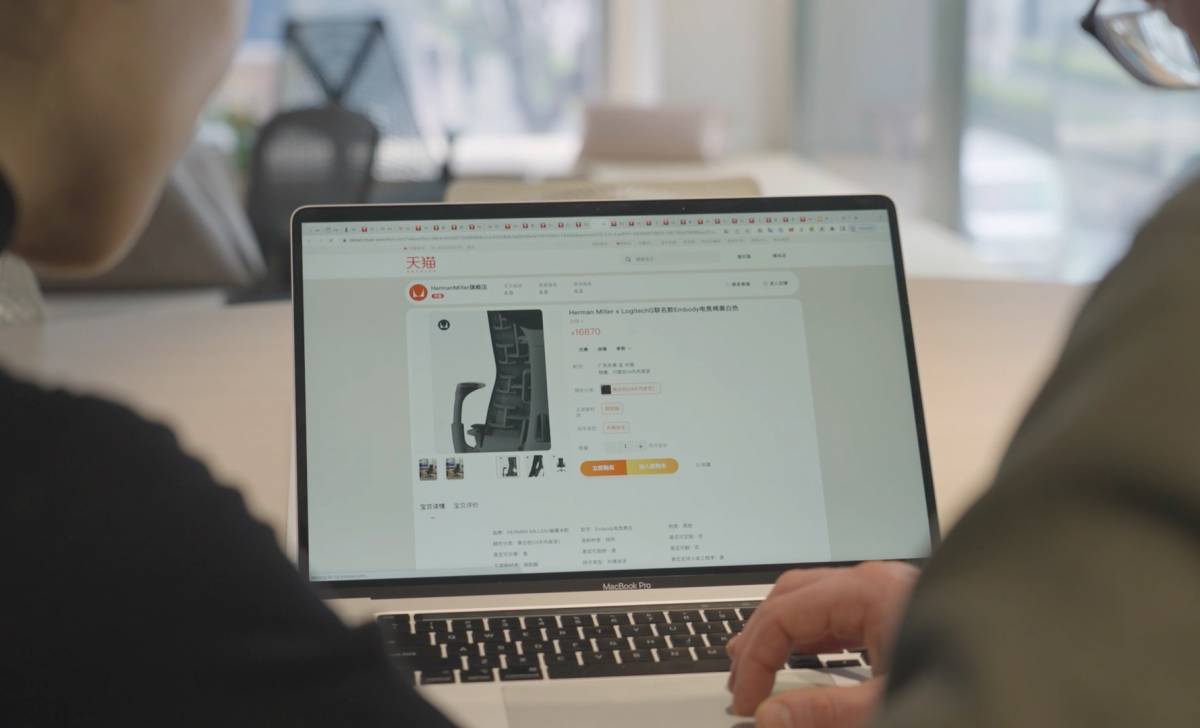
When e-mail began to replace letter writing, it threatened more than just standards of penmanship: it posed a direct challenge to a business model that dates back to 1840, when the British Royal Mail introduced the Penny Black, the world’s first adhesive postage stamp.
In the digital era, stamps aren’t worth the paper they are printed on to anyone but collectors—and national mail carriers are struggling to adapt. One such carrier, Australia Post, has seen letter volumes decline by around a quarter, or one billion letters, since 2008 and expects the fall to accelerate between 8 and 11percent annually in coming years. Losses in its letters business increased to almost AUD $218 million ($201 million) last year. Left unchecked, Australia Post Managing Director and CEO Ahmed Fahourclaims losses could hit AUD $1 billion “within a few years.”
Yet for now Australia Post is still profitable. How? By innovating to take advantage of the digital economy.
“The parcels business is driven by e-commerce and that’s why we’re investing pretty heavily in the digital space,” says Steven Foo, the company’s head of international supply management. “We’re supporting e-commerce platforms, providing logistics and offering secure payment gateways as well. It’s about being part of the e-commerce supply chain.”
Opportunity knocks
Australia Post officials recognize that the key to survival is driving the parts of their business that are growing: domestic parcel deliveries and, increasingly, cross-border trade. Parcels are keeping Australia Post afloat, contributing AUD $355 million ($328 million) in profits last financial year to help the company stay in the black. Domestically delivered parcels volume grew 9.3 percent in the same period, with most of the gains due to a boom in online shopping.
And in a country with justover 11million addresses, long-term survival means expanding overseas. In May, Australia Post signed an agreement with the Alibaba Group that’s illustrative of its international ambitions. The deal involves Australia Post setting up its own branded storefront on the Tmall Global marketplace to help small and medium-sized Aussie businesses sell their products to China’s burgeoning middle class—then providing all the logistics required to ship orders from the factory floor or farm gate to the Chinese consumer’s door.
The size of the opportunity is hard to overstate. The number of Chinese online passed 600 million in 2013, a sixfold increase over 2005. Half of those Internet users shop online—the equivalent of 13 times the entire Australian population. That already makes China one of the biggest e-commerce markets in the world, but with an online penetration rate of just 45.8 percent of the population, there’s room for plenty more growth. E-commerce currently accounts for less than eight percent of China’s retail economy, but by 2017 that is expected to rise to over 12 percent. B2C transactions, such as those on Tmall.com, Tmall Global’s parent website, are forecast to make up more than half of all Chinese e-commerce within three years, exceeding RMB 2 trillion ($325 billion) in value.
One-stop shop
Australia Post’s partnership with Tmall Global is designed to help Aussie businesses—and by association the postal service—share in that growth story by making it possible for even the smallest companies, who might not be able to afford setting up their own infrastructure, to begin selling to China. And that means going way beyond providing postage.
“Merchants that come on board get a one-stop shop service,” says Foo. “There’s no sign up fee or deposit—we’ve absorbed that—and we provide them with very competitive shipping rates specifically for this program. But we also have translation done for them at basically no cost and a customer service team on the ground in Hangzhou answering queries 12 hours a day, seven days a week. Plus we have data and analytics that helps them understand how similar products sell in China, giving them an idea of how they should be marketing their product.”
Three merchants have been onboarded so far, with a string of others in the pipeline. The initial trio are Wise Wine, Sorella Organics maternity and sleep wear, and Bioflex Nutrition supplements, reflecting Chinese consumers interest in Australia’s food and beverage, mother and baby, health and nutrition, and cosmetics and organics sectors.
Working in partnership with a Mandarin-speaking web design agency, Australia Post’s e-commerce team takes a hands-on approach with new merchants. “The product translation sometimes takes a bit of time, because some merchants don’t necessarily know what message they want to put forward and what appeals to the Chinese customers, so there’s a bit of work involved in getting this right,” says Foo. “We also work with merchants to make sure their photography is effective – for example, using close-ups to show the quality of the stitching in apparel.”
It’s a sign of the times when a national post office doubles as a digital marketing consultant, but once the products are listed Australia Post is on more traditional logistics territory. The company has built a back-end Merchant Management System (MMS), which is linked to the Tmall Global platform through an Application Programming Interface (API). Orders received via Tmall in Chinese get transferred to the MMS and translated into English, enabling Australian merchants to fulfill the orders with no language barriers. Orders are then dispatched using one of two premium international postage options from Australia Post.
International relations
The Tmall Global initiative isn’t Australia Post’s first partnership in China. It has been working closely with China Post since 2005.The company has ajoint venture in China called Sai Cheng, a third-party integrated logistics provider that is 51% owned by China Post and 49% by Australia Post, with bases in eight cities across China’s four main manufacturing regions.
“We support manufacturing services by bringing products from factories into our warehouse, consolidating them, and doing everything from pick-and-pack to quality inspection, inventory management and labeling the parcels,” says Foo. “Then we put it in an airplane or ship, ship it across to Australia, and dispense it in the last mile in Australia.”
The IT and logistics systems of Sai Cheng are linked with those of China Post and Australia Post to ensure delivery runs as smoothly as possible for customers. “We offer a one-stop solution to make it easier for customers so they don’t have to deal with different partners in the logistics chain,” says Foo. “To the customer it needs to be just one interface, one invoice—they shouldn’t have to worry about what goes on behind the scenes.”
Two-way trade
Sai Cheng’s resources will be available to Australia Post as it attempts to increase the volume of shipments to China, an example of the increasing cooperation between national post offices.
Both Australia Post and China Post are members of Kahala, a 10-member organization set up to promote the common interests of traditional postal services as they look to compete with international logistics providers such as FedEx, UPS and DHL. The group also includes Japan Post, Korea Post and Singapore Post—three markets Foo flags as having potential for closer partnership. Alibaba Group in May announced plans to invest about $250 million in Singapore’s publicly-traded mail carrier.
While customs at both ends of the parcel’s journey are beyond the control of either post office, Foo does believe traditional services hold the edge over their rivals when it comes to speeding B2C shipments, such as those ordered from its Tmall Global store, across the border.
“We can clear parcels through our postal system as well as our commercial clearance. Our competitors can only go through the commercial channel,” he says. “Because we’re sending parcels for personal consumption through China Post, there’s greater coordination. In the commercial channel, customs clearance is subject to CIQ [China Inspection and Quarantine] inspection, which adds an extra layer to the clearance process.”
Domestic delivery
While deliveries to China represent the greater long-term opportunity, right now the majority of cross border e-commerce travels in the opposite direction. To help facilitate even greater traffic, Australia Post began stocking Alipay vouchers in its retail outlets in June, providing a payment solution for consumers in Australia shopping on Tmall.com and Taobao Marketplace. Alipay is China’s largest e-payments provider.
The vouchers, which come in denominations of 250, 500 and 1,000 RMB, are purchased in Australian dollars and can be used by customers to add funds to their Alipay account online. The target audience is Chinese immigrants, expats and students. “The vouchers give them the convenience of loading up their Alipay account, so they can start buying products without having to ask friends or relatives in China to top up their account,” says Foo.
Soon the goods those customers order will make their way from port to doorstep courtesy of one single system. StarTrack is a supply chain logistics provider Australia Post used to jointly own with Qantas, but acquired completely in November 2012. The new division will combine StarTrack’s e-commerce driven logistics with Australia Post’s ownership of the last mile. The familiar parcel vans emblazoned with Australia Post’s red “P” are to be replaced by a new fleet sporting a blue version of the logo accompanied by the StarTrack name.
While the move is part of a wider agenda to streamline the company as it adapts to the post-letters era, it also removes a handover point to help speed delivery and improve service on the Australian leg of the international e-commerce supply chain.
“Because you’re dealing within onecoordinated chainwe’ll be able to coordinate a lot better,” says Foo. “Certain things you can’t expedite such as the speed of customs processes or how fast a ship or plane moves. However, we’re always looking at ways we can be more efficient and provide the best end to end e-commerce supply chain solutions for our domestic and international customers.”




